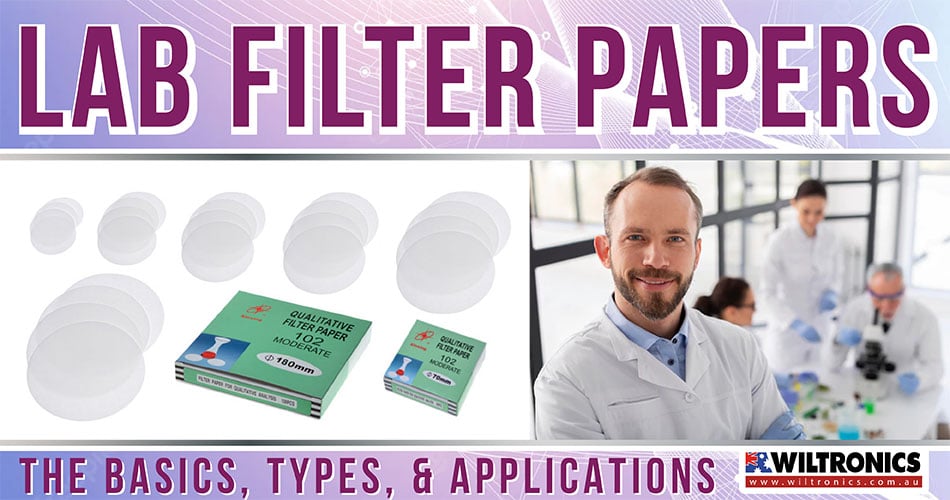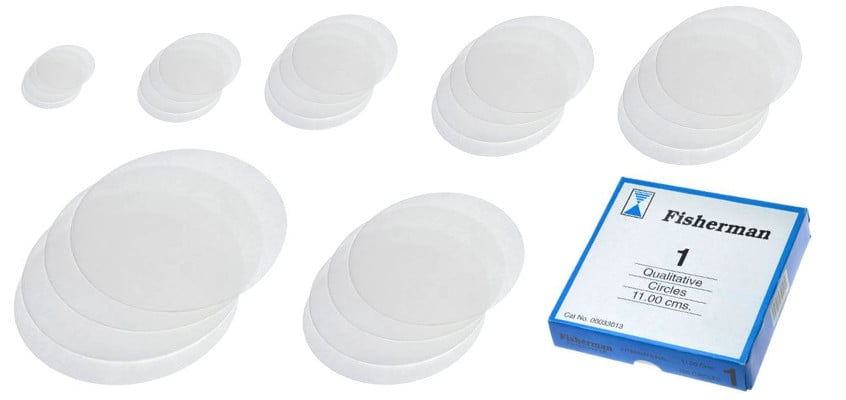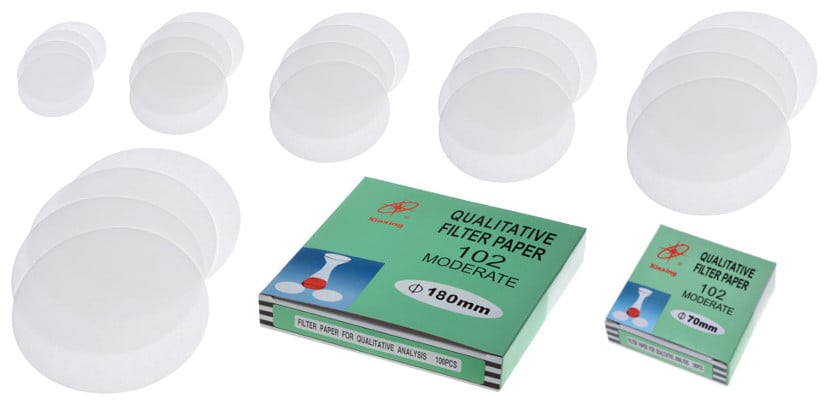Lab Filter Papers: The Basics, Types and Applications
October 11, 2022

Lab filter papers are not your ordinary ‘papers’.
In chemistry, there is a method called filtration that separates solids from liquids. This involves the use of a filter medium that allows the fluid to get through but keeps the solid particles.
Enter lab filter papers. They are indispensable in the filtration process and are common laboratory consumables. For one, a range of fields, including biology, have applications for this cotton fibre tool.
Regardless of the application, you must learn how to use them correctly. Use this post as your guide and learn the basics, types and uses of lab filter papers.
What are Lab Filter Papers?
Lab filter papers perform a strong absorption effect for liquids. This can separate the solution from the solid.
A great example of this is a mixture of sand and water. Through filtration, the sand stays behind on the filter paper and becomes a residue. Meanwhile, the water passes through the medium and turns into a filtrate.
Simply put, lab filter papers separate the substances through them. Their appearance is usually round in shape and made from cotton fibres.
The semi-permeable paper works as a physical barrier. Moreover, there are small holes that hold out the big solid particles and offer a pathway for liquid.
Depending on the type of paper used, the filtration method can be done fast, intermediate, or at a slow speed.
The structure
Generally, filter papers are directional. The front side fibre is looser, while the back side, the mesh surface, has tight fibres.
The front pores feature a bell mouth shape. These pores become smaller along with the thickness of the filter paper, which is about 0.35 – 0.5mm. And the size of dust particles varies, ranging from a few microns to tens of microns.
The filtration of filter paper is more than the screening. It also comes with the function of deep filtration. The side magnification (its side enlargement) shows that it is a multi-layer structure.
The front side should face the airflow direction. Then the back (screen surface) should be the air outflow direction.
Qualitative Filter Paper vs Quantitative Filter Paper
There are two types of lab filter papers: qualitative and quantitative. Depending on the filtration speed, they can be divided into fast, medium, and slow speeds.
Qualitative filter paper
Qualitative filter papers are used in qualitative analysis, hence the name. The application involves a separation routine to determine and identify materials.
This type of filter paper produces more cotton fibres if it is filtered. It has High Wet Strength to withstand pressure and vacuum filtration. Plus, the ash produced after ashing is not more than 0.13%.
Qualitative filter papers contain ash and are suitable for non-burning filtration. Below are the factors you need to consider for choosing a qualitative filter paper:
- Chemical compatibility. This measures how stable a substance is when mixed with another substance. The qualitative filter paper should not react with the solvent to be filtered.
- Pore size. The size of filtering paper pores allows the filtrate to pass through it. The denser the pore, the higher the filter capacity. 13 grades of filter paper are used for qualitative analysis (150uM to 320uM in thickness).
- Wet strength. This is the measure of how well the qualitative filter paper can hold when it is wet. Wet-strengthened ones can be used for filtering strongly acidic or alkaline solutions.
- Filtration method used. For basic gravity filtration, cellulose or paper filters are ideal. For gravimetric analysis where ignition is required, glass microfiber filters must be used.
- Filtration efficiency. The right size and amount of particles can be stopped and retained by filtering paper. The smaller the fibre diameter is, the higher the filtration efficiency.
Get your Qualitative filter papers from us!

Fisherman Filter Paper
Product code: LH1550
This Fisherman Filter Paper is high quality, lint-free, and comes in a pack of 100. Offers medium retention for qualitative analysis and general lab use.

Filter Paper Pack of 100
Product code: LH1553
It comes in a pack of 100 and offers medium retention for qualitative analysis and general lab use.
Quantitative filter paper
Quantitative filter papers are used for quantitative and gravimetric analysis. They are utilised for quantitative analytical techniques to separate, determine and identify materials.
This filter paper also makes the paper not react with the common chemicals. As a result, it produces fewer impurities, making it ideal for quantitative work.
Compared to qualitative, the ash produced after ashing is less than 0.0009%. And in the case of qualitative filter papers, their wet strength is comparatively low.
Quantitative filter papers are ‘ashless’ and are treated with hydrochloric and hydrofluoric acids. Below are the factors you need to consider for choosing a quantitative filter paper:
- Size of filter paper. If the filtering paper is large, its effective area will be large. Moreover, it will offer less resistance and can be used for a long time.
- Binder content in the filter material. This affects the filtration process. An open fibre structure can be useful for coarse filtration and voluminous precipitates. In contrast, a tight fibre matrix is great for capturing fine-grained precipitates.
- Wet strength. It should have high wet strength to withstand pressure and vacuum filtration.
- Filtering techniques. Your choice of quantitative filter paper will depend on these, e.g. washing or decanting.
How to Use Lab Filter Papers?
To get optimal performance from the filter papers, you need to learn the art of folding and using them.
Begin by folding the filter paper in half, then fold again to create a quarter circle. When you open it, you should see a 90-degree angle formed on the filter paper.
Next, fold it again as described, and then fold the quarter circle inward to achieve a funnel shape. When creating a funnel, there will be three stacked layers on one side and another on the other side.
Further, pour a liquid into the funnel with filter paper in it. Ensure you tilt the container slowly so the flow remains consistent. This also guarantees the liquid does not exceed the height of the filter paper.
Finally, when the liquid flows from the funnel, it must flow down the cup wall and go to the bottom. Tilt the breaker and attach the funnel to the side wall of the cup for hassle-free filtration.
A few helpful tip
To increase the filtration rate:
- Avoid pressing the folds near the concentrated part. Otherwise, it may break the paper.
- Prevent dirt from getting to your hands before filtration. Keep the filter paper upside down to avoid collecting dirt on the surface.
- Pour a hot solvent on the paper before hot filtration to increase the speed rate.
The Bottom Line
Lab filter papers have two categories: qualitative and quantitative. Your selection will depend on which you think suits your laboratory task well.
Learning the correct way to fold and use filter paper is also crucial for optimal filtration. You need to understand the filtration speed to pick the most suitable option, as well.
There you have it! This guide has provided all the basics you need to know. It will surely come in handy for performing laboratory analysis using filter papers.
© Electrotech Brands Pty Ltd 2022


Write a Comment
You must be logged in to post a comment.